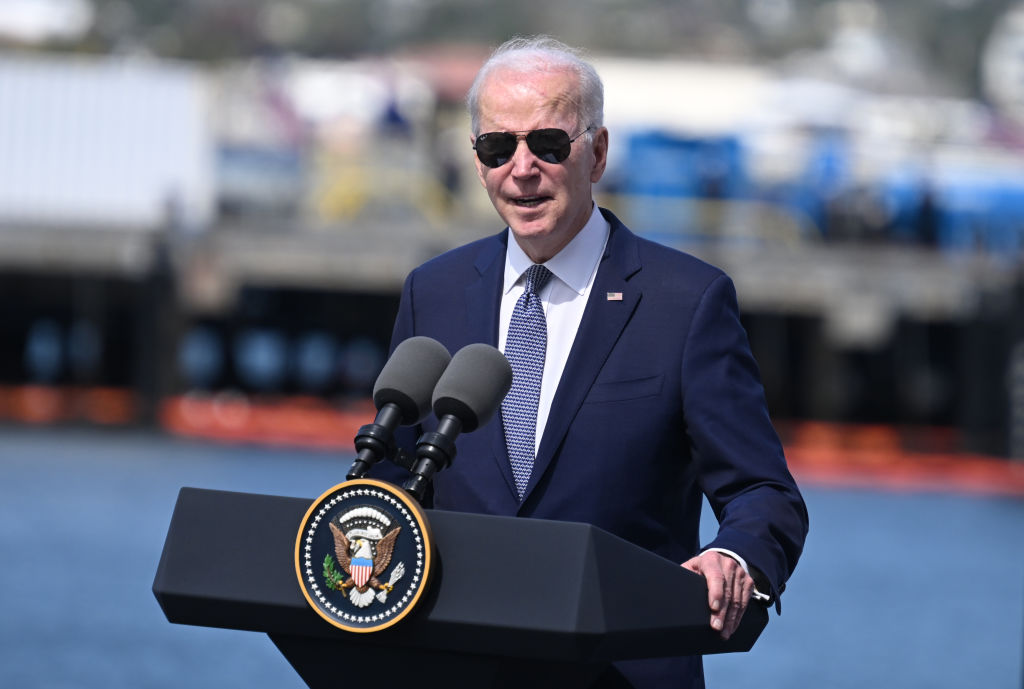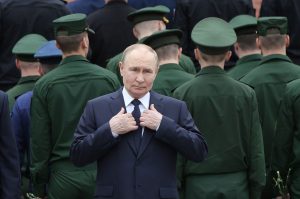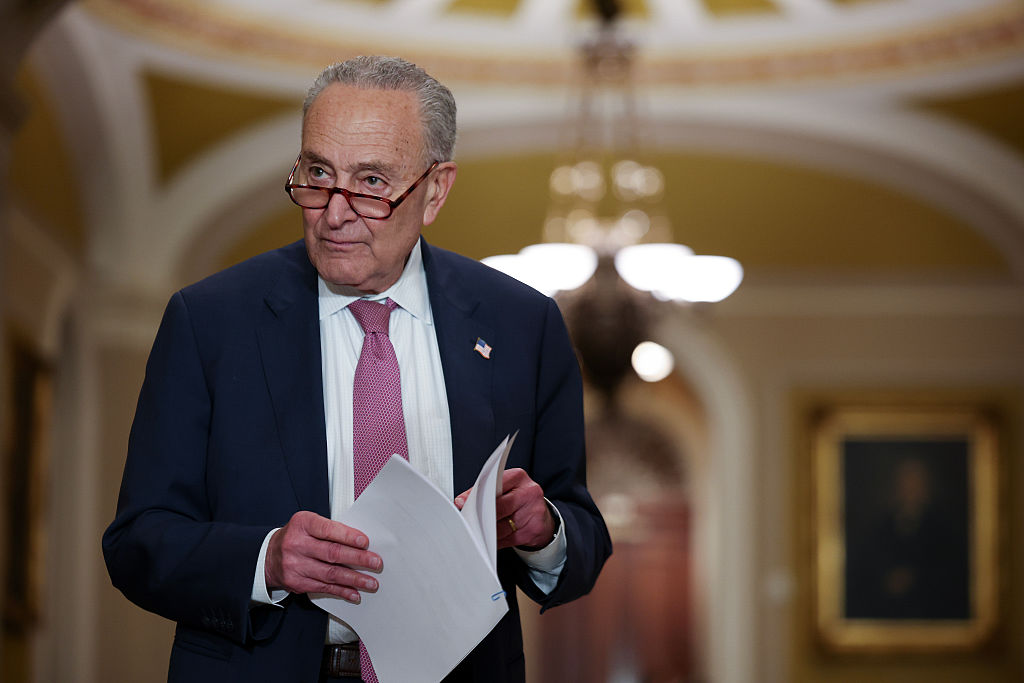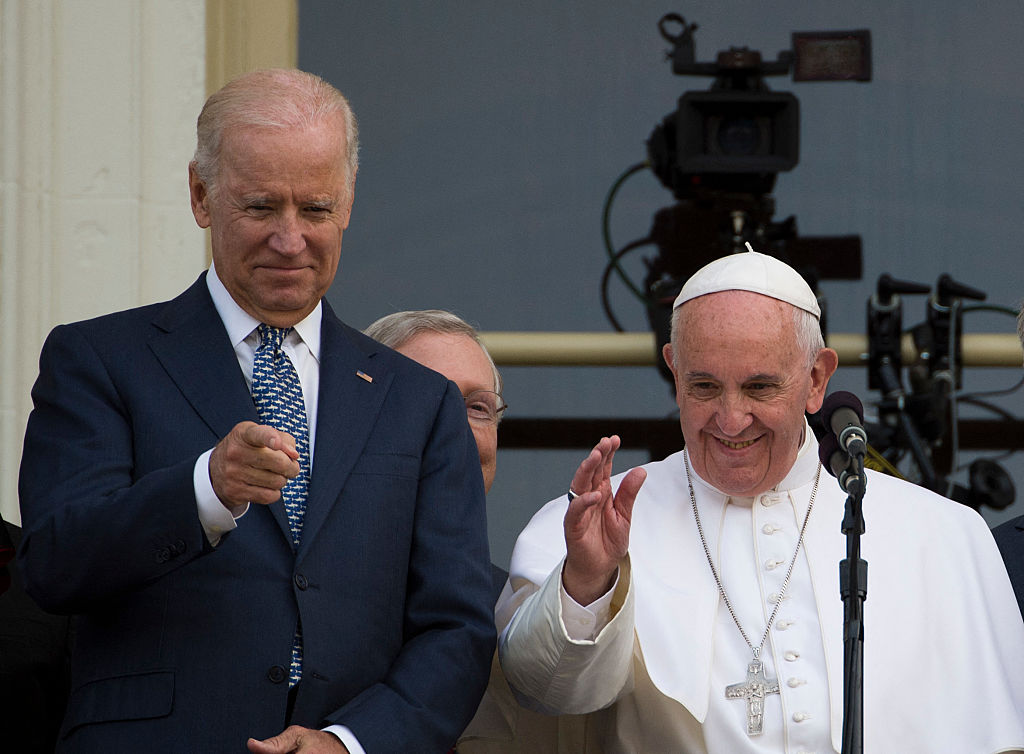This week we heard a lot about AUKUS, a trilateral initiative between the United States, the United Kingdom and Australia that will revamp the Australian naval fleet with nuclear-powered submarines over the next two decades. President Biden, UK Prime Minister Rishi Sunak and Australian Prime Minister Anthony Albanese made a show of it in sunny San Diego on March 13, where they officially inaugurated the defense agreement and gave speeches about defending sea lanes and the rules-based international order in the Indo-Pacific.
But there was another story here: the Pentagon released a torrent of charts and bureaucratic documents on what it would like to see in the coming year’s defense budget. If you have the patience to read some of them, you will quickly stumble over the obvious: the Biden administration wants to throw a whole lot of cash into a department already rolling in it. The White House also hopes Congress authorizes and appropriates significant resources for the Pentagon’s procurement and research and development accounts.
The FY2024 budget request is asking for $170 billion to purchase new weapons for its land, sea, air and space forces, with slightly more than two thirds of that spending devoted to the Navy and Air Force for brand new F-35 fighters, B-21 bombers, unmanned systems and ships. Nearly $38 billion will be earmarked to ensure the nuclear triad is fully updated and operational. The Navy is also planning to invest more in the long-range, stand-off strike weapons that would allow it to keep China’s People’s Liberation Army (PLA) under threat without unduly exposing itself to Beijing’s growing fleet of ballistic and cruise missiles. “As the PRC races to modernize its military, this budget will sharpen our edge by making critical investments across all timeframes, theaters, and domains,” Defense Secretary Lloyd Austin wrote in a press release.
As always, most of the attention on Capitol Hill will be on the top-line numbers. For FY2024, the administration is requesting a whopping $886 billion for national defense, which if authorized would be $100 billion more than what was enacted in 2022. In other words, that increase would be the equivalent of 37 percent of China’s entire defense budget in a matter of two short years. That’s simply an astounding number and more proof that the howling from defense hawks about penny-pinching on national security is patently absurd.
Those howls are as loud as they are predictable. Immediately after the White House made its top-line number public, critics trashed it as unwise and wimpish. “The President’s defense budget is woefully inadequate and disappointing,” Senate Armed Services ranking member Roger Wicker said. Representative Mike Rogers, chairman of the House Armed Services Committee, wasn’t pleased either. “The United States is facing the most complex and challenging set of threats to our national security in decades,” Rogers intoned. “Unfortunately, the President has once again submitted a budget request that fails to take these threats seriously.”
No budget request is perfect. The entire budget process, as painful as it is to watch, is the sum of compromise — and very often that so-called compromise amounts to chucking more money at a problem and pretending this amounts to a solution. This is certainly the case with defense budgets in recent years, where “more” is automatically assumed to be “better” and “less” is castigated as irresponsible. I suspect some of the loudest defense hawks, whether they reside in Congress or in the think tank world, would continue to moan and groan regardless of what the top line number was. Even if the defense budget reached the $1 trillion mark — and according to the Pentagon’s comptroller, we are only a few years away from that milestone — these folks would still be lambasting the administration.
The point that too often gets overlooked in these discussions is that more money doesn’t necessarily buy more security for the United States — especially if a lot of that money is meant to subsidize the defense budgets of allies and partners. As my colleague Benjamin Friedman, the policy director at Defense Priorities (where I also work), observed in a statement last week, “[t]he defense budget mostly serves special interests and other countries’ security.”
It’s hard to take issue with this assessment. The entire budgetary process is one big Washington food-fight, where different services of the military and different constituencies on and off Capitol Hill compete with one another for a bigger slice of the pie. Lawmakers who have Air Force bases or facilities in their districts want to keep, and possibly expand, those facilities. Lawmakers who represent districts where shipyards create tens of thousands of jobs push for larger budgets for the Navy. The combatant commanders trek up to the armed services committees every year and argue for why their command deserves more priority. The commander of the US nuclear arsenal, meanwhile, warns that Washington’s nuclear triad is atrophying while Beijing’s is modernizing. Very often, the proposed solution is to make everybody happy by enlarging the pie.
The result, combined with an aversion to prioritization about what is actually vital to national security, is what you see today: ballooning military expenditures as far as the eye can see.

























